
Flowers are usually chosen for gardens based on color, ease of care, or another physical feature. Milkweeds (Asclepias spp.) are somewhat special in this regard as they’re the only plant that monarch caterpillars – which grow into the threatened monarch butterfly – can eat. If there’s no milkweed, there won’t be any monarchs. A lot of milkweed planted now goes into butterfly and pollinator gardens.
That’s not to say that milkweeds aren’t worth planting if you’re not interested in providing caterpillar food. The plants have gorgeous sprays of fragrant flowers in colors ranging from white to red to purple, and even some in beige and green. These are so easy to grow that for a long time they were considered annoying weeds instead of desirable flowers. Milkweeds are perennials and are found over much of North America.
Do be aware that the sap from some varieties is a skin irritant, so you’ll need gloves when deadheading the plant in summer and pruning it in fall. Deadhead wilted flowers by cutting the stem above the top set of leaves; prune by cutting off stems about 6 inches above the ground after the seed pods have matured.
In general, plant milkweeds in full sun, and put them in areas that aren’t too windy so that seeds don’t spread all over your yard and disrupt your garden design with new milkweeds in spring.
Milkweeds for General Planting
Some milkweeds grow very well no matter where they’re planted in USDA plant hardiness zones 3-9.
1. Butterfly weed (A. tuberosa)
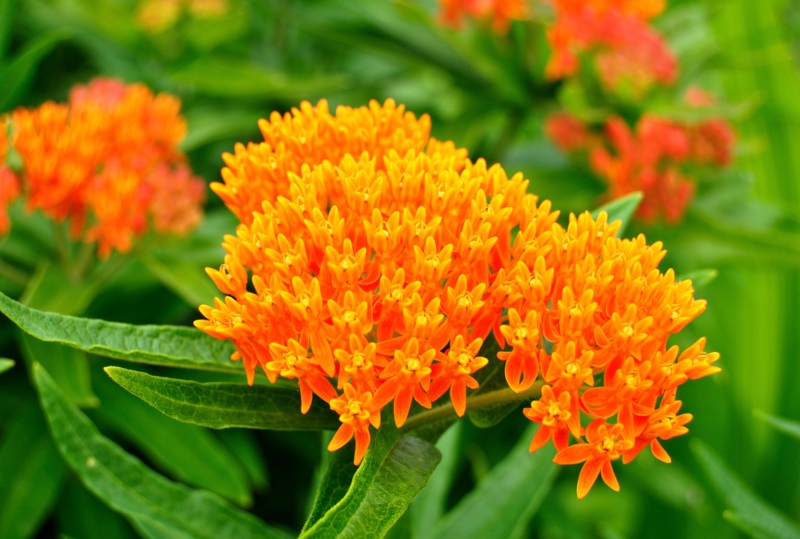
Brilliantly colored flowers carpet the surface of butterfly weed. Many cultivars have yellow blossoms, while some have bright orange or red. The clusters of flowers have flat tops. This is a short variety that reaches only 2 feet in height. It needs full sun and well-draining soil; it’s also drought-tolerant. It can bloom from May to September, so be sure to deadhead the plant regularly to promote more blooming.
2. Common milkweed (A. syriaca)
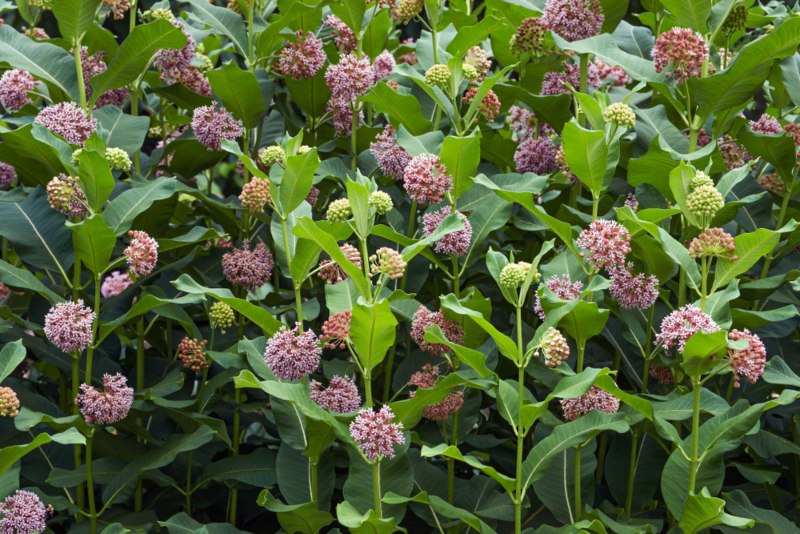
Tall stalks of common milkweed, growing mainly to 5 feet but occasionally to as much as 8 feet, contrast with shorter butterfly weed. Balls of small pink-to-purple flowers appear only in summer. This variety needs a lot of sunlight; don’t place it near areas that get any shade. It also needs soil that’s on the moister side.
3. Showy milkweed (A. speciosa)
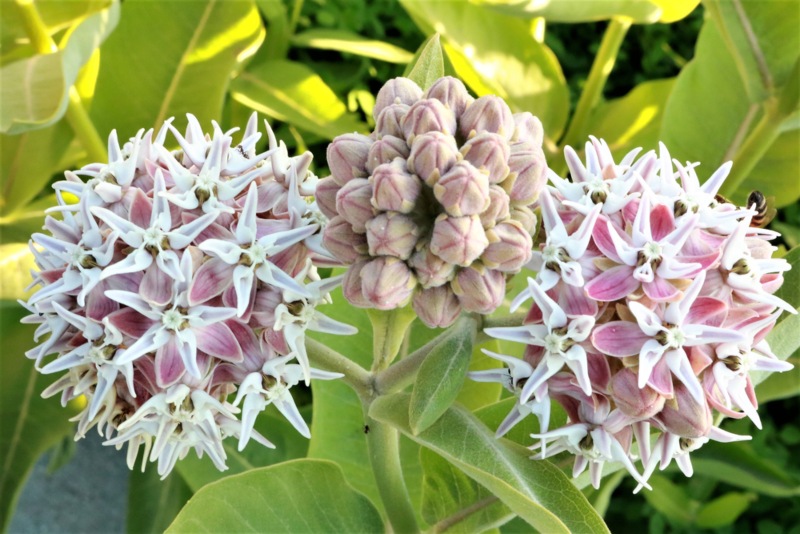
This is a good choice for the western half of North America. Ball-shaped clusters of flowers that are star-shaped and usually blush or rosy pink bloom in summer. This is another sun-loving plant that needs water. It is rather short, with plants growing to about 3 to 4 feet, with a few getting as tall as 6 feet.
4. Swamp milkweed (A. incarnata)
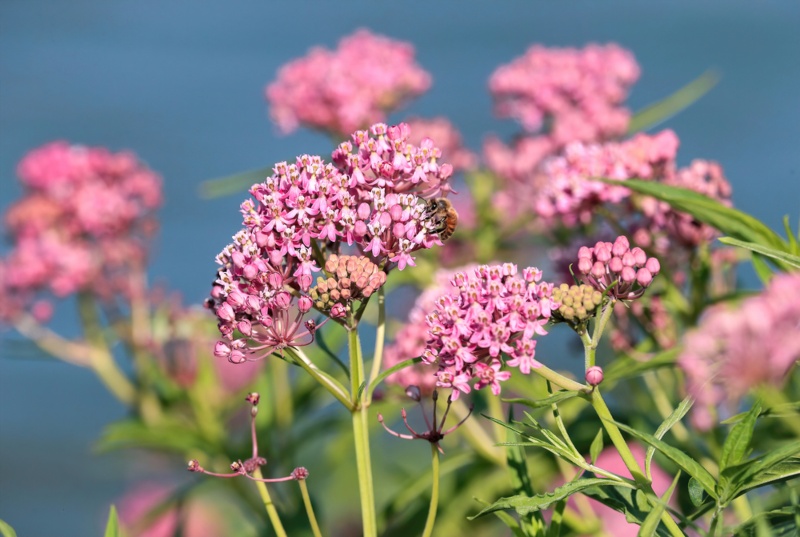
This is a more shade-tolerant variety that needs a lot of moisture, with soil that’s usually wet. Tight clusters of flowers ranging from light to hot pink in color bloom from early summer to mid-autumn. The flowers’ fragrance is sometimes reminiscent of vanilla. The plant can grow to 5 feet.
Native Milkweeds
If you really want some low-maintenance, monarch-friendly plants, look for varieties that are native to your region. These varieties have the best chance of doing very well and withstanding whatever climate issues your region throws at them. There are too many to discuss in one article – for example, Texas has about 36 native varieties and Nebraska has about 17 – but a few are standouts.
5. Texas milkweed (A. texana)
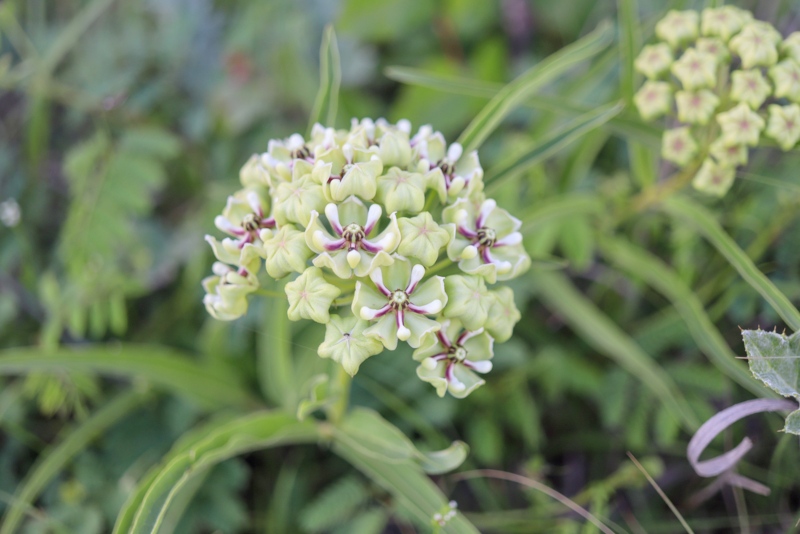
This grows in the higher elevations of western and southwestern Texas, such as around the Trans-Pecos region and the Edwards Plateau. This is the only white milkweed that grows in the state. It likes moister areas like river banks despite not needing a lot of water, so if your yard is near a stream, this might be a great variety for you. It does need full sun and well-draining soil that’s slightly acidic.
6. California milkweed (A. californica)
This purple milkweed is native to central and southern California, and it prefers drier areas. It is drought-tolerant and grows to only about 3 feet. A distinguishing feature is the white fuzz that covers its stems.
7. Arizona milkweed (A. angustifolia)
Another white-flowered variety of milkweed, with an occasional light-pink shading. This grows in the mountains and woodlands with more water in Arizona. It grows to about 3 feet and does need protection from harsh summer sunlight.
Tropical Milkweed
8. Tropical milkweed (A. curassavica)
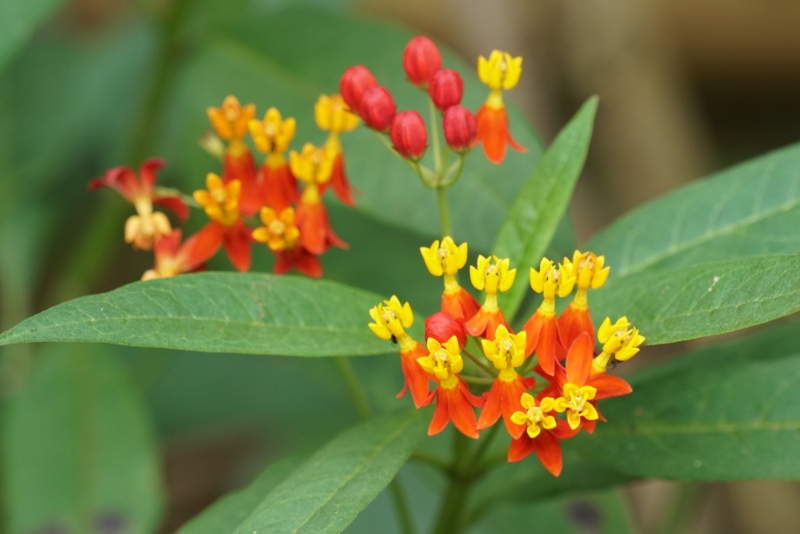
Tropical milkweed (A. curassavica) is a pretty plant with slender leaves and bright red and yellow blooms. It’s very easy to propagate and care for, and it’s become naturalized in some regions of southern Texas and western California. Butterflies do feed on it; in fact, they’re very attracted to it. However, the plant can play host to a parasite called Ophryocystis elektroscirrha. OE, as the parasite is known, can latch onto fully grown monarchs and transfer to plants that the monarchs visit to feed off of. Because tropical milkweed doesn’t die back in winter in these warmer areas, the parasite doesn’t die along with the plant, and caterpillars end up ingesting a lot of those parasites.
If you want to try growing tropical milkweed, it’s better to put it in a container away from other butterfly-attracting plants. If you already have this milkweed growing in your yard, the Xerces Society advises cutting it back to the ground at least twice during spring and summer and removing it at the end of summer. Replace it with a friendlier variety of milkweed.





